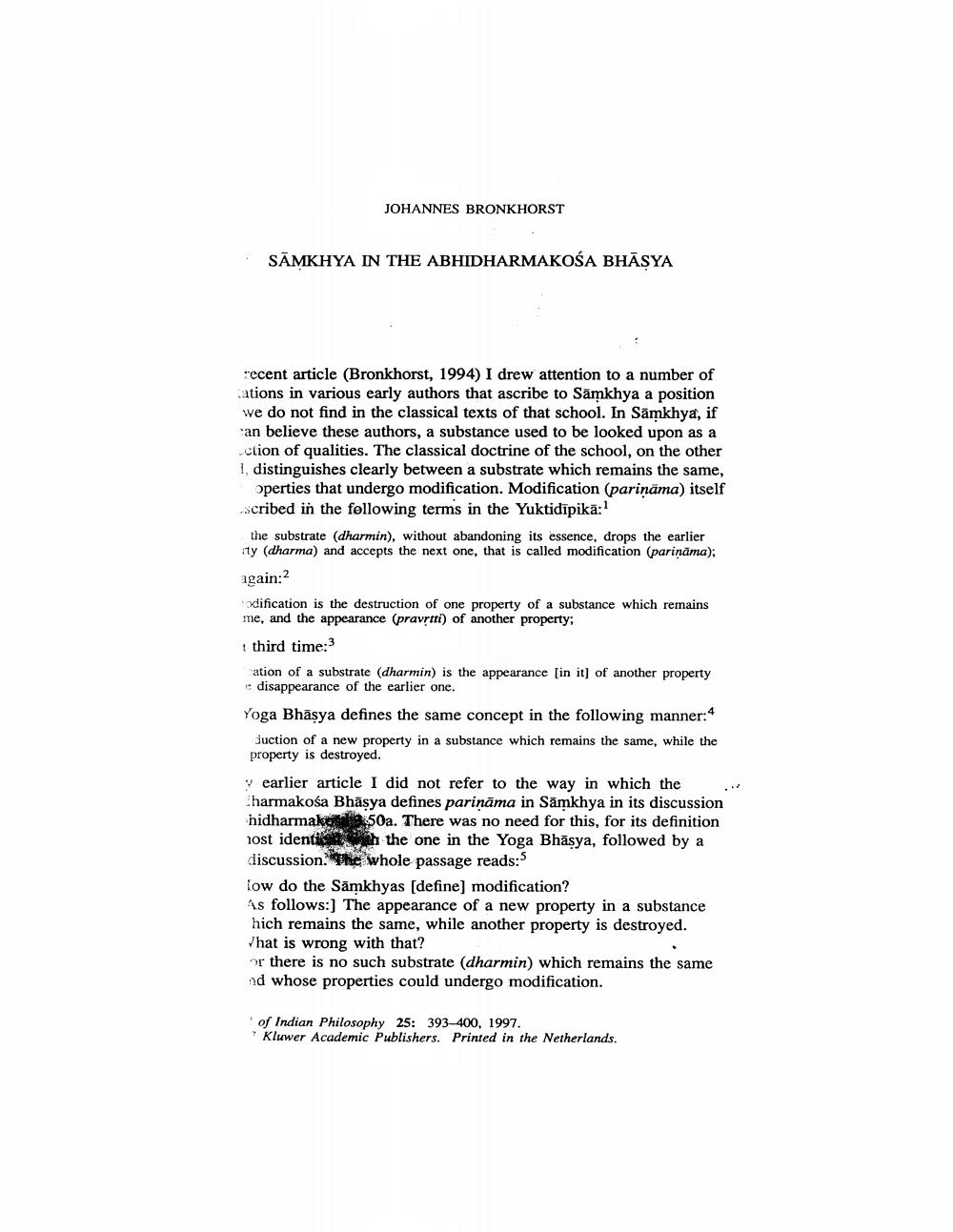Book Title: Samkhya In Abhidharmakosa Bhasya Author(s): Johannes Bronkhorst Publisher: Johannes Bronkhorst View full book textPage 1
________________ JOHANNES BRONKHORST SAMKHYA IN THE ABHIDHARMAKOŚA BHĀSYA recent article (Bronkhorst, 1994) I drew attention to a number of cations in various early authors that ascribe to Samkhya a position we do not find in the classical texts of that school. In Samkhya, if an believe these authors, a substance used to be looked upon as a ction of qualities. The classical doctrine of the school, on the other 1, distinguishes clearly between a substrate which remains the same, operties that undergo modification. Modification (parinäma) itself scribed in the following terms in the Yuktidipika: the substrate (dharmin), without abandoning its essence, drops the earlier ity (dharma) and accepts the next one, that is called modification (parināma); again: odification is the destruction of one property of a substance which remains me, and the appearance (pravrtti) of another property; third time: "ation of a substrate (dharmin) is the appearance [in it) of another property e disappearance of the earlier one. Yoga Bhäsya defines the same concept in the following manner: Juction of a new property in a substance which remains the same, while the property is destroyed. y earlier article I did not refer to the way in which the Sharmakośa Bhäsya defines parināma in Samkhya in its discussion hidharmak 9.50a. There was no need for this, for its definition nost identi t h the one in the Yoga Bhäsya, followed by a discussion. The whole passage reads: low do the Sāmkhyas [define) modification? As follows:) The appearance of a new property in a substance hich remains the same, while another property is destroyed. Vhat is wrong with that? or there is no such substrate (dharmin) which remains the same od whose properties could undergo modification. of Indian Philosophy 25: 393-400, 1997. ? Kluwer Academic Publishers. Printed in the NetherlandsPage Navigation
1 2 3 4 5
